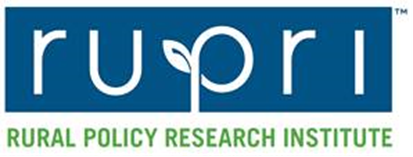The Journal of Rural Health grants free access to this research policy brief that examines telehealth availability and readiness in U.S. hospitals. The variables examined include organizational factors, county population, geography, and census divisions. Read the brief here.
ONC: Health Information Management at Substance Abuse Treatment Centers
The Office of the National Coordinator for Health Information Technology (ONC) leads the federal effort to support health information technology systems nationwide. For this report, ONC reviewed a survey conducted in 2017 by the Substance Abuse and Mental Health Services Administration in which 13,585 U.S. substance abuse treatment centers were queried about their use of computers or electronic resources to store and exchange treatment records. Read the report here.
Latest National Rankings for Child Well-Being Show Pennsylvania at 20th
The 2020 edition of the KIDS COUNT® Data Book, released by the Annie E. Casey Foundation, shows Pennsylvania ranks 20th for overall child well-being.
The report uses 16 indicators across four domains to rank each state. Pennsylvania now ranks 26th in the family and community domain, 23rd in economic well-being, 19th in health, and 7th in education.
Learn more about Pennsylvania’s rankings or get additional information on the Data Book here.
Healthy People 2020: Using Law and Policy to Promote the Use of Oral Health Services in the United States
Good oral health is essential to overall health and well-being, but oral health problems are common. More than 4 in 5 people have had at least one cavity by age 34, and more than 2 in 5 adults have had mouth pain in the past year.
And yet less than half of the population uses the oral health care system. Many common oral health problems like tooth decay, gum disease, and jaw disorders are preventable with regular oral care. But many people who need this care face barriers, which means they aren’t able to get the care they need.
This is a summary of the report, Oral Health: The Role of Law and Policy in Increasing the Use of Oral Health Services, which is the fifth in a series of reports that highlights the practical application of law and policy to improve health across the Nation. Each report also has success stories, or Bright Spots, that show how communities use laws and policies to meet their health goals and achieve Healthy People Oral Health targets.
This report presents evidence-based and promising law and policy solutions that community and tribal leaders, government officials, public health professionals, health care providers, lawyers, and social service providers can use in their own communities. These solutions focus on improving oral health care financing, strengthening the oral health workforce, and removing barriers to using oral health care services. Many of these solutions align with the Heathy People objective to increase the number of people who use the oral health care system.
New Rural Policy Brief Published on Telepharmacy Rules and Statutes

A new rural policy brief is available from the RUPRI Center for Rural Health Policy Analysis:
Telepharmacy Rules and Statutes: A 3-Year Update for all 50 States
Jason Semprini, MPP; Fred Ullrich, BA; Keith Mueller, PhD
This policy brief analyzed administrative rules and legislative statutes governing each state’s pharmacy practice. Key features of telepharmacy regulations were investigated for comparative analysis. Twenty-one states currently authorize retail telepharmacy, but between these states the regulatory activity varies considerably.
Please click here to read the brief.
Journal of Appalachian Health Is Now On the Directory of Open Access Journals!
The Journal of Appalachian Health has been added to the Directory of Open Access Journals.
DOAJ is a community-curated online directory that indexes and provides access to high quality, open access, peer-reviewed journals. DOAJ is independent; All funding is via donations. All DOAJ services are free of charge including being indexed in DOAJ. All data is freely available.
DOAJ operates an education and outreach program across the globe, focusing on improving the quality of applications submitted (Source: DOAJ, 2020).
Supporting the Health and Wellbeing of Middle-Aged Adults Living Alone in Rural Counties
This report from the University of Minnesota Rural Health Research Center shares insights from healthcare providers in 14 rural counties with the highest rates of middle-aged adults living alone in order to inform policy and practice in how best to support the health and well-being of this demographic. Read more here.
The Supply and Rural-Urban Distribution of the Obstetrical Care Workforce in the U.S.
This brief from the WWAMI Rural Health Research Center describes the supply and geographic distribution of four types of OB care clinicians – obstetricians, advanced practice midwives, midwives (not advanced practice), and family physicians – using data from the 2019 National Plan and Provider Enumeration System and the American Board of Family Medicine. Read more here.
Request for Information: NIH Seeking Input on Health Disparities in Neurological Disease and Care – July 15
The National Institutes of Health (NIH) seek input from scientists, clinicians, patients, families, caregivers, advocates, and the broader community on the most important knowledge gaps, health and research needs, and promising opportunities to help guide the National Institute of Neurological Disorders and Stroke’s (NINDS) research. These disparities and inequities may exist across several demographic factors, including race/ethnicity, food/housing insecurity, socioeconomic status, geographic location, sex, sexual orientation, gender identity, educational attainment, age, disability, etc. Responses are encouraged from all interested stakeholders. Read more here.
Rural Healthcare and COVID-19: A Research Roundup
Journalist’s Resource has compiled a Rural Healthcare and COVID-19 research roundup, which includes multiple rural health stories describing how COVID-19 has affected hospitals, such as the stories described below. Rural hospitals are less equipped to react to a pandemic than its urban counterpart due to fewer hospitals, fewer specialty care physicians, and fewer intensive care unit beds per capita. Before the pandemic, rural hospitals struggled financially, and measures to combat COVID-19 further complicate the crisis.

